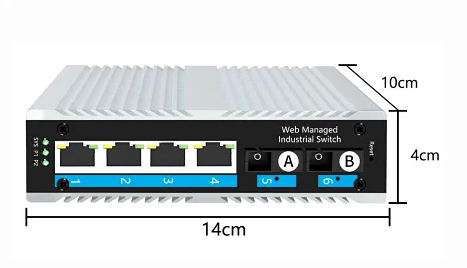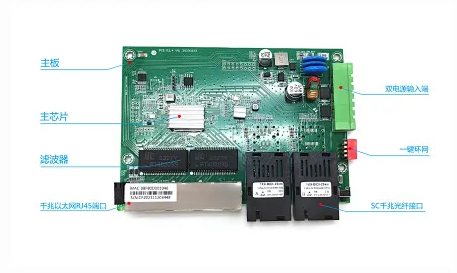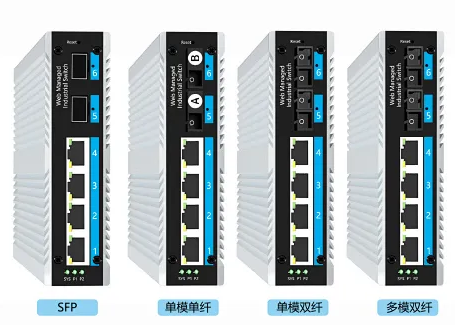With the continuous iteration of chips, industrial switches have also ushered in an era of pursuing beauty and delicacy. Under the condition of ensuring its stability and heat dissipation, the engineers are constantly pursuing the ultimate craftsman spirit Creating a miracle. CFW-HY2014S-20 (YFC industrial switch product model) is small and delicate in appearance, 4 * 10 * 14 is difficult Imagine the exterior size of a gigabit industrial switch.

The working environment temperature width can be between-40℃ and 85℃. At 80℃ + ultra-high temperature, it can still run stably and easily deal with it. It works for 24 hours without any packet loss or downtime.
Although the sparrow is small, it has all the internal organs Although its small appearance, the core is not a few.
Main board (backplane): The main board is the contact channel for each service interface and data forwarding unit. Backplane throughput, also known as backplane bandwidth, is the maximum amount of data that can be throughput between the interface processor or interface card and the data bus of an industrial switch, and is a very important indicator of the performance of an industrial switch.
Processor (CPU): The processor is the core component of industrial switch computing, and its main frequency directly determines the industrial switch
The computing speed of the changeover.
Memory (RAM): Memory provides dynamic storage space for CPU operations, and the size of the memory space is the same as the CPU frequency
together determine the maximum amount of computation to be calculated.
Flash: Provides a persistent storage function, mainly saving configuration files and system files to ensure the industrial switch
Normal operation, and provide a convenient and convenient way for the upgrade and maintenance of network equipment.
Switching chip: The switching chip is the core component of the industrial switch, which is responsible for the forwarding and processing of data packets
and supports a variety of network protocols and data communication methods.
Terminal: The port is the connection interface for data exchange between the industrial switch and external devices, including RJ45 port,
Various types of optical ports can meet the access requirements of different devices.
Power supply system: The power supply system provides a stable power supply for industrial switches to ensure that the switches can operate normally. Some advanced industrial switches also have a redundant power supply to ensure that the switch remains stable in the event of a power failure
Fixed-ground operation.
Chassis : The function of the chassis is to protect the industrial switch from physical damage and environmental influences.
Management module: The management module is a necessary part of the industrial switch, which is used to remotely manage and monitor the switch
Operational status to ensure its stable operation.

The three basic functions stand out
The three basic functions of industrial switches include data exchange, address learning, and loop avoidance, which successfully ensure efficient, accurate, and stable data transmission.
Data exchange: When the data packet enters the switch from the input port, the YOFC industrial switch will find the corresponding forwarding table entry according to the destination address information in the packet, and then send the packet out from the matching output port. This hardware-based forwarding mechanism enables the switch to achieve wire-speed forwarding, i.e., the forwarding speed is not determined by the packet size
and processing power.
Address learning: YOFC industrial switches have the function of address learning. In the initial state, the forwarding table of the industrial switch is empty. When a switch receives a packet, it parses the source address information in the packet and associates it with the port number from which the packet was received, which is stored in the switch's address table. In this way, when the switch receives a packet with that address as the destination again, it can forward it directly according to the address table without having to do so
Broadcast or flood.
Loop avoidance: In a network, if there is a loop, where packets can be continuously looped through the network, it can lead to problems such as network congestion and broadcast storms. YOFC industrial switches use a mechanism called Spanning Tree Protocol (STP) to avoid loops. STP allows switches to exchange information to determine the best path in the network and prevents packets from being sent on certain ports in the loop, ensuring that packets are transmitted correctly through the network.

Post time: Jul-15-2024

